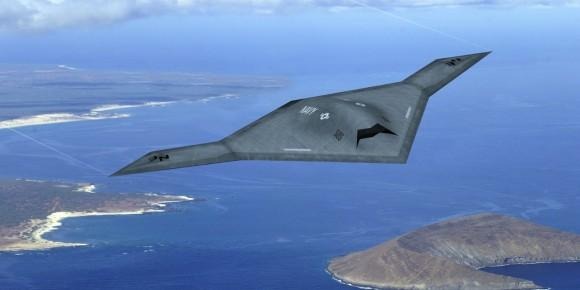RQ-180 Stealth Drone revealed as US Air Force targets hostile skies
Forget Amazon delivery drones; the US Air Force's latest unmanned stealth craft has reportedly already taken to the skies, potentially capable of mounting clandestine electronic warfare in enemy territory. The drone, believed to be the RQ-180 and made as part of a potentially $2bn project by Northrop Grumman, is already running test flights ahead of full operations by 2015, it's reported, and be focused on missions in airspace where the US Air Force's existing, less stealthy unmanned craft cannot go.
Currently, Aviation Week reports, the Air Force primarily uses Global Hawk and Reaper drones, in less contentious airspace such as Iraq and Afghanistan. However, the military has supposedly been shopping for a less obvious craft which could slip unnoticed through the skies above countries where an American presence is less welcome.
Neither the Air Force nor Northrop Grumman would comment on the RQ-180 project, though the contract is believed to have been inked as far back as 2008. Financial reports from the manufacturer suggest small-scale production of a new aircraft program began earlier in 2013.
Technical details are scant, though the RQ-180 is believed to be considerably larger than Northrop Grumman's other recent unmanned project, the X-47B drone that was mistaken for a UFO last year. That has an extended wingspan of around 62 feet, whereas aerial photography of shelters said to be for the new stealth drone suggest a potential wingspan of more than double that.

Despite the increase in size, it's not known whether the RQ-180 will undertake strike missions. Instead, it may be more focused on stealth and electronic attacks, piloting a new radar-reducing cross-section design that can not only minimize the chance of discovery but allow the drone to fly higher, longer, and further afield. The image above is a concept, since the actual appearance of the craft has not been revealed.
As for payload, according to an unnamed defense official, the RQ-180 carries active, electronically scanned array (AESA) radar which is known for allowing precise tracking but still being difficult to detect over background noise, along with passive electronic surveillance measures.
While the Air Force may not be commenting on specifics, it has not shied from admitting in the recent past that it is aiming for greater clandestine abilities. "We are over-invested in permissive ISR and we have to transform the force to fight and win in contested environments" Air Force deputy chief of staff for intelligence, surveillance, and reconnaissance (ISR) Lt. Gen. Robert Otto said back in September. "We will seek a more balanced fleet of both manned and unmanned platforms that are able to penetrate denied airspace and provide unprecedented levels of persistence."
VIA Washington Times
